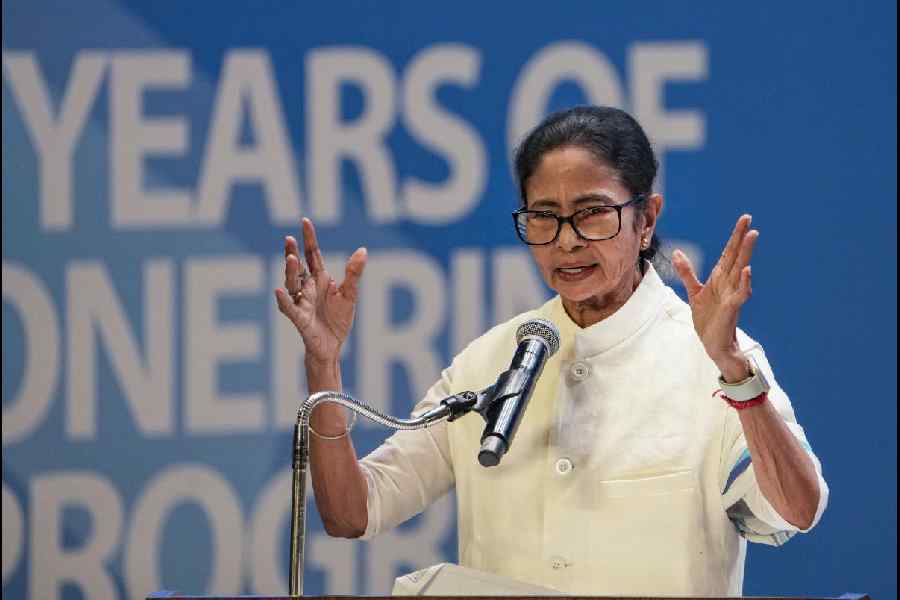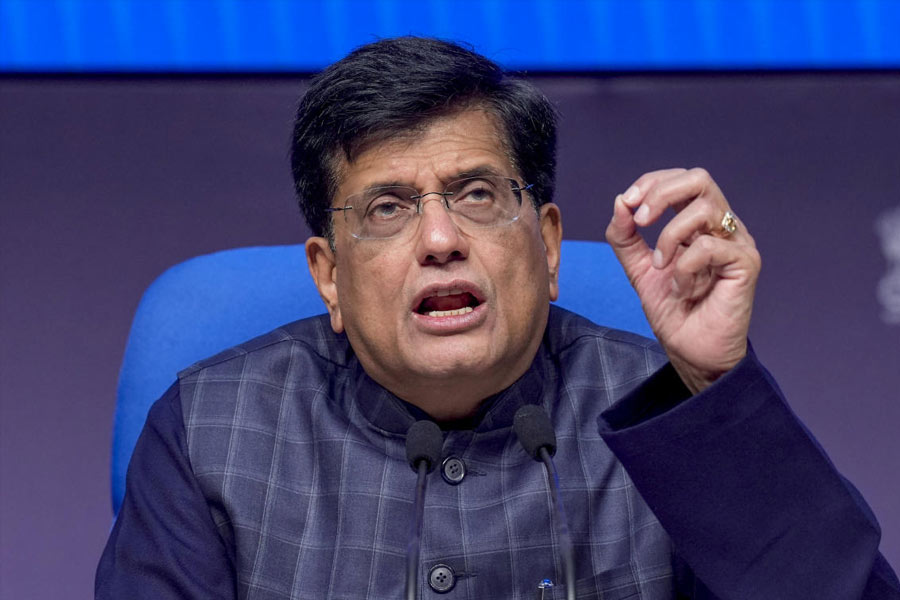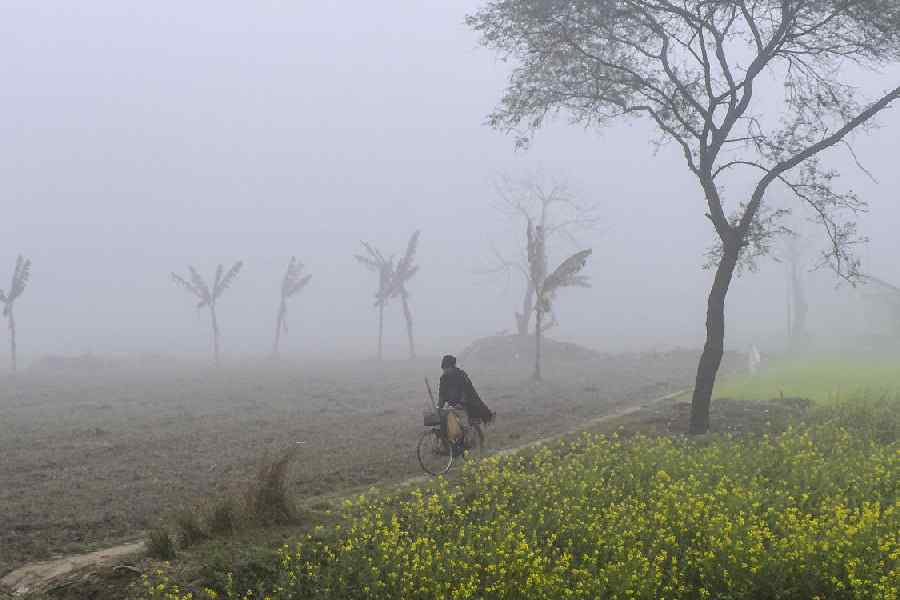 |
Mumbai, March 19: This must rank as the Godzilla of all fudges played out in this country in the guise of fiscal consolidation.
Finance minister Pranab Mukherjee has quietly dumped his commitment to eliminate the Centre’s revenue deficit — at least the real McCoy, which has traditionally been defined as the excess of revenue spending over revenue earnings.
It’s a commitment that every elected government in office since 2003 has sworn to achieve under the Fiscal Responsibility and Budget Management (FRBM) Act.
Mukherjee has chosen instead to do two things: first, he has created a hugely watered-down proxy target called the “effective revenue deficit” and, second, stretched the time schedule for its elimination by six years to March 31, 2015.
The effective revenue deficit — a new measure that the government started reporting from last year’s budget — strips out a portion of revenue expenditure that has been re-classified as grants for the creation of capital assets.
It was never clear why he had started reporting the new metric last year. Now it is.
“The concept of the effective revenue deficit, introduced in the last budget, to address the structural imbalances in the revenue account, is being brought in as a fiscal parameter,” Mukherjee said in his budget speech last Friday.
The government had never classified revenue expenditure as a grant for creation of capital assets until last year.
Elevating the new reporting metric to a fiscal parameter now is a subtle trick that the government has used to depress its revenue deficit reduction target under the FRBM Act by almost 47 per cent.
Mukherjee did not, however, explicitly state this in his budget speech as it might have sparked off a caterwaul of protest over the government’s move to duck its commitments. He said his aim was to “strike a balance between fiscal consolidation and strengthening macroeconomic fundamentals to create adequate headroom to deal with future shocks”.
Mukherjee isn’t coming upfront with this fiscal fudge: he has tucked it into a corner of the Finance Bill 2012. When and if Parliament passes the bill, it will automatically gain its approval. It is unlikely that there will be any discussion on this issue in the budget debate where members move cut motions.
The government doesn’t on its own have the numbers in the Lok Sabha to see the bill through. That could explain why it has reached out to Mamata Banerjee and her Trinamul Congress. It is a lot easier to give up the pawn — Dinesh Trivedi in the railway ministry — than jeopardise the passing of the Finance Bill. The government will collapse if the bill fails to pass and it will also lose out on the opportunity to hammer down the size of the deficit that needs to be eliminated.
Redefining deficits
When the budget was presented in February 2010, there was no mention of the effective revenue deficit. That came in the following year. While doing so, Mukherjee worked the concept backward by a year to either aid comparison or lend it some legitimacy.
In the budget estimates for 2010-11, the Centre had made a provision of Rs 31,317 crore which has since ballooned to Rs 1,64,672 crore in the budget estimates for 2012-13, a surge of over 425 per cent in just two years.
In the process, the “effective revenue deficit” has gone down to 1.8 per cent of the GDP, giving Mukherjee bragging rights to claim that he has put the country back on the road to fiscal consolidation.
But the truth is that the real revenue deficit still hovers at 3.4 per cent of the GDP — at the same level as the budget estimates for 2011-12.
The finance minister has come up with some half-baked justification for the change. “Focusing on this (the effective revenue deficit) will help in reducing the consumptive component of revenue deficit and create space for increased capital spending,” Mukherjee said.
This argument is specious at best and flawed at its worst. Mukherjee hasn’t clearly spelt out how it will raise the headroom for capital spending. The suspicion is that he will keep padding the grants’ component in order to keep lowering his actual deficit reduction targets.
The real reason for the change is clearly spelt out in the fine print of Finance Bill 2012.
Under section 4 (1) of the FRBM Act, the government was supposed to completely eliminate the revenue deficit by March 31, 2009.
Mukherjee is now amending this sub-section of the act to “eliminate the effective revenue deficit by the 31st March, 2015, and thereafter build up adequate effective revenue surplus and also to reach revenue deficit of not more than 2 per cent of the gross domestic product by the 31st March 2015”.
The 13th Finance Commission had clearly spelt out that the long-term and permanent target for the Centre was to attain a zero revenue deficit.
The commission had said that this target was based on the golden rule that “in the absence of economic emergencies, no economic agent should borrow to finance current consumption”.
Mukherjee clearly has different ideas about the deficit reduction targets.
The elaborate exercise means that the Centre has lost the moral high ground to lecture states — especially Bengal, which was one of the last to enact the FRBM Act — on the need to trim their deficits and tie them up in knots by linking debt write-offs and disbursals of state-specific grants to them based on their strict adherence to deficit reduction commitments.
Capital assets or revenue spending?
The sum being treated as grants for creation of capital assets in the budget estimate for 2012-13 is Rs 164,672 crore. Two ministries — finance (Rs 51,597.75 crore) and rural development (Rs 62,276.89 crore) — hog over 69 per cent of the revenue spending that is masquerading as capital grants.
And what are the capital assets being created out of this corpus?
There’s the Mahatma Gandhi National Rural Employment Guarantee Programme (Rs 31,659.59 crore), the Pradhan Mantri Gram Sadak Yojana (Rs 19,343.10 crore), the Indira Awaas Yojana (Rs 11,066.20 crore) — all under the ministry of rural development.
Then there’s the Accelerated Irrigation Benefits Programme (Rs 14,142 crore), the Backward Region Grants Fund (Rs 6,990 crore) and the state-specific needs (Rs 6,723.75 crore) — all operated by the finance ministry. Funds under these schemes were given to the Trinamul government when Mamata was clamouring for a special package for Bengal.
Another big beneficiary of these grants is the Sarva Shiksha Abhiyan (Rs 8,409.06 crore) under the ministry of human resource development.
Reclassifying expenditures
Mukherjee’s plan to re-categorise a portion of revenue expenditure as a grant for creation of capital assets is an ingenious way to get out of a sticky situation.
During its elaborate discussions with the 13th Finance Commission headed by former bureaucrat Vijay Kelkar, the government had tried similar tactics without great success.
The committee, which submitted its report in December 2009, had slammed the ploy. It said: “The existing classification of revenue and capital expenditure cannot be disturbed in an ad hoc manner. It has to be the result of a comprehensive study. Any disturbance of this classification has wide- ranging implications for the finances of both the Union and the states.... It is not possible to accept the suggestion... about reclassifying some portions of revenue expenditure as capital expenditure. It would thus be appropriate to continue with the existing classification of expenditure as ‘revenue’ or ‘capital’.”
The government had argued that outputs constructed by the public sector providing long-term benefits to society over time should be treated as capital expenditures. Two areas where the re-classification was suggested were health and education. So revenue expenditure on the National Rural Health Mission or the Sarva Shiksha Abhiyan — two major social welfare projects of the government — could be treated as capital expenditure, it argued. The government had said that expenditure incurred on these programmes was more akin to investment and, hence, it would be fair to treat it as capital expenditure.
The 13th Finance Commission rejected these arguments.
Mukherjee has now come up with a halfway — house strategy: classify the spending as a grant for the creation of capital assets and strip out the spending from revenue expenditure to arrive at the effective revenue deficit, which would then become the deficit to eliminate by March 2015.
This line of argument was never placed before the Finance Commission and, given the vehemence with which it rejected the reclassification of revenue expenditure as capital expenditure, it is doubtful that the commission would have approved.
Delayed deadlines
Under the original terms of the FRBM Act which was enacted in 2003, the Centre was supposed to completely eliminate revenue deficit and cap fiscal deficit at 3 per cent of the GDP by March 2008.
But in 2004, the Centre first pushed back the deficit reduction targets by a year to March 2009. It promised to bring down the revenue deficit by 0.5 per cent of the GDP every year from 2004-05. It also promised to pare the fiscal deficit by 0.3 per cent of the GDP every year and bring it down to 3 per cent by March 2009.
In February 2005, then finance minister P. Chidambaram hit the pause button on the FRBM targets as a consequence of implementing the 12th Finance Commission recommendations on higher fund transfers to the states. But he was able to cap the fiscal deficit at 4.1 per cent the next year and later assert that he had “redeemed my promise that the process of fiscal correction will be resumed in 2006-07”.
The global economic crisis in 2008 once again forced the government to put a freeze on its deficit reduction commitments as it cobbled a Rs 186,000-crore fiscal stimulus package in the form of tax reliefs and increased expenditure on public projects.
Revenue deficits first hove into view in the early eighties when the government started spending more than it earned in the form of taxes.
“It was in 1979-80 that the central finances fell into a revenue deficit after recording a surplus since 1950-51 in all but two years,” says the 12th Finance Commission report for 2005-10. “The combined account of the Centre and the states went into a revenue deficit in 1982-83 and that of all states in 1986-87.”
“It is vital that the revenue and fiscal deficit targets of the Act and the Rules are not modified and the Centre sets an example for the states,” the 12th Finance Commission said.
The International Monetary Fund, the Reserve Bank of India and the global credit rating agencies have been urging the government to prepare a credible roadmap for fiscal consolidation.
But it’s obvious that the government has a different set of priorities.










